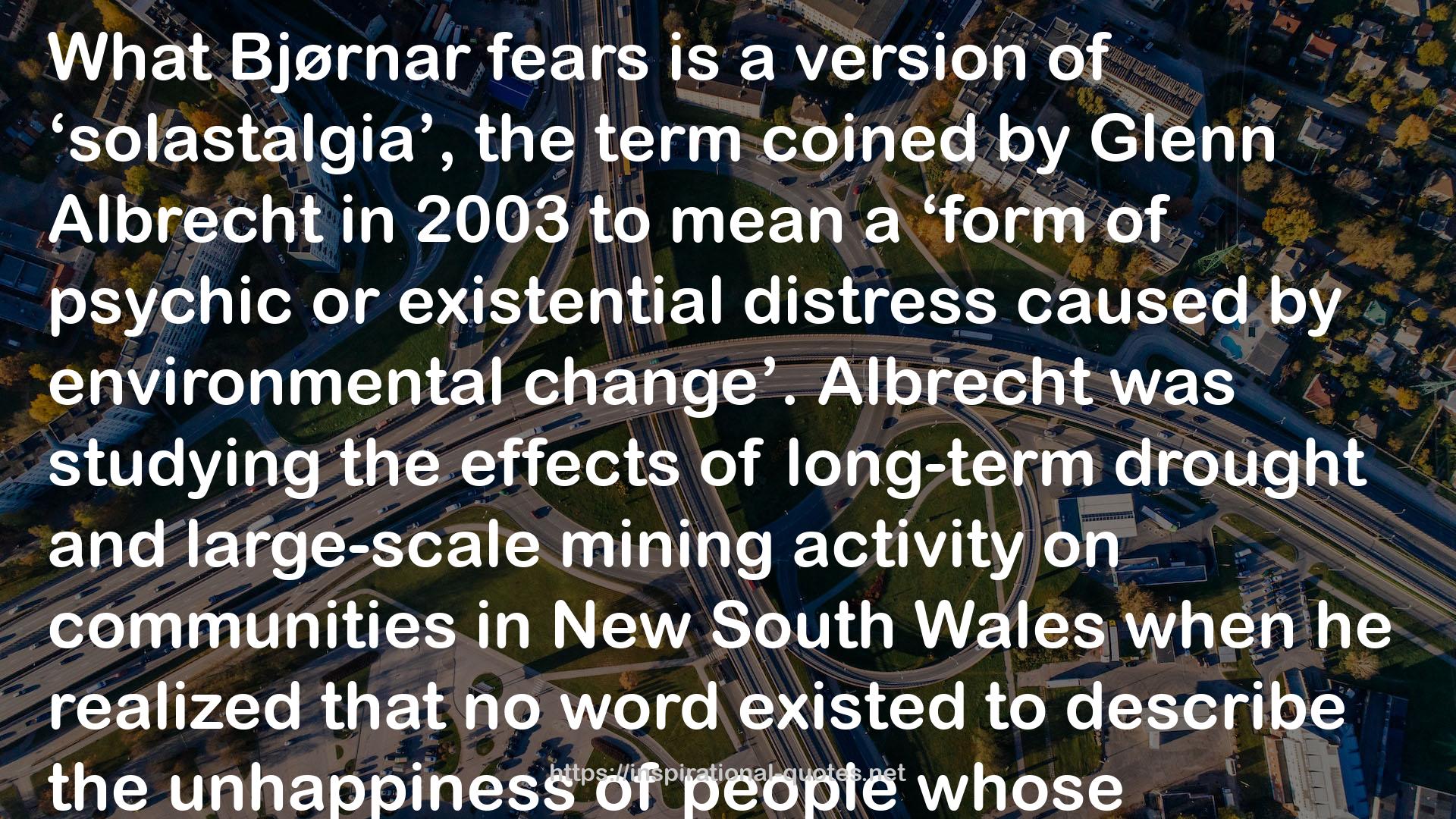" What Bjørnar fears is a version of ‘solastalgia’, the term coined by Glenn Albrecht in 2003 to mean a ‘form of psychic or existential distress caused by environmental change’. Albrecht was studying the effects of long-term drought and large-scale mining activity on communities in New South Wales when he realized that no word existed to describe the unhappiness of people whose landscapes were being transformed about them by forces beyond their control. He proposed his new term to describe this distinctive kind of homesickness. Where the pain of nostalgia arises from moving away, the pain of solastalgia arises from staying put. Where the pain of nostalgia can be mitigated by return, the pain of solastalgia tends to be irreversible. Solastalgia is not a malady specific to the Anthropocene – we might consider John Clare a solastalgic poet, witnessing his native Northamptonshire countryside disrupted by enclosure in the 1810s – but it has certainly flourished recently. ‘Worldwide, there is an increase in ecosystem distress syndromes,’ wrote Albrecht in an early paper on the subject, ‘matched by a corresponding increase in human distress syndromes.’ Solastalgia speaks of a modern uncanny, in which a familiar place is rendered unrecognizable by climate change or corporate action: the home become unhomely around its inhabitants. "
― Robert Macfarlane , Underland: A Deep Time Journey
